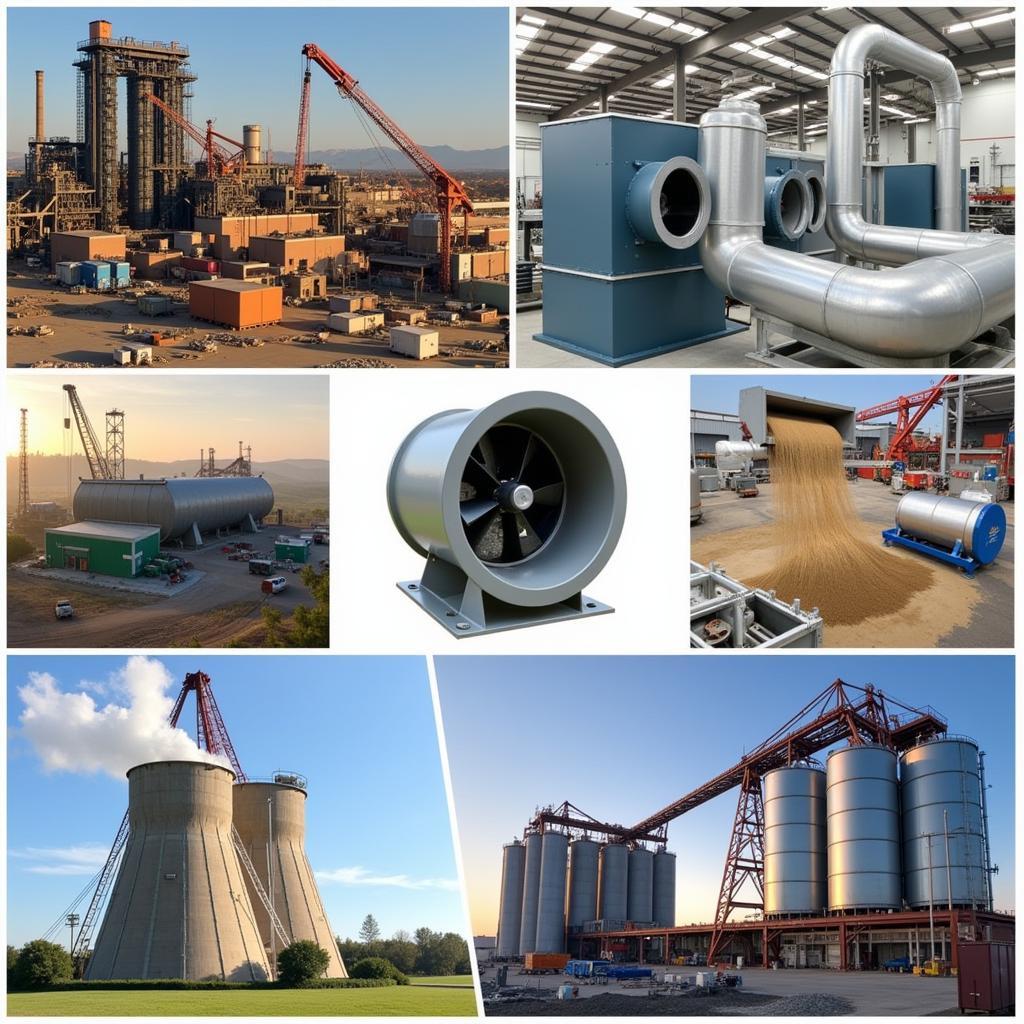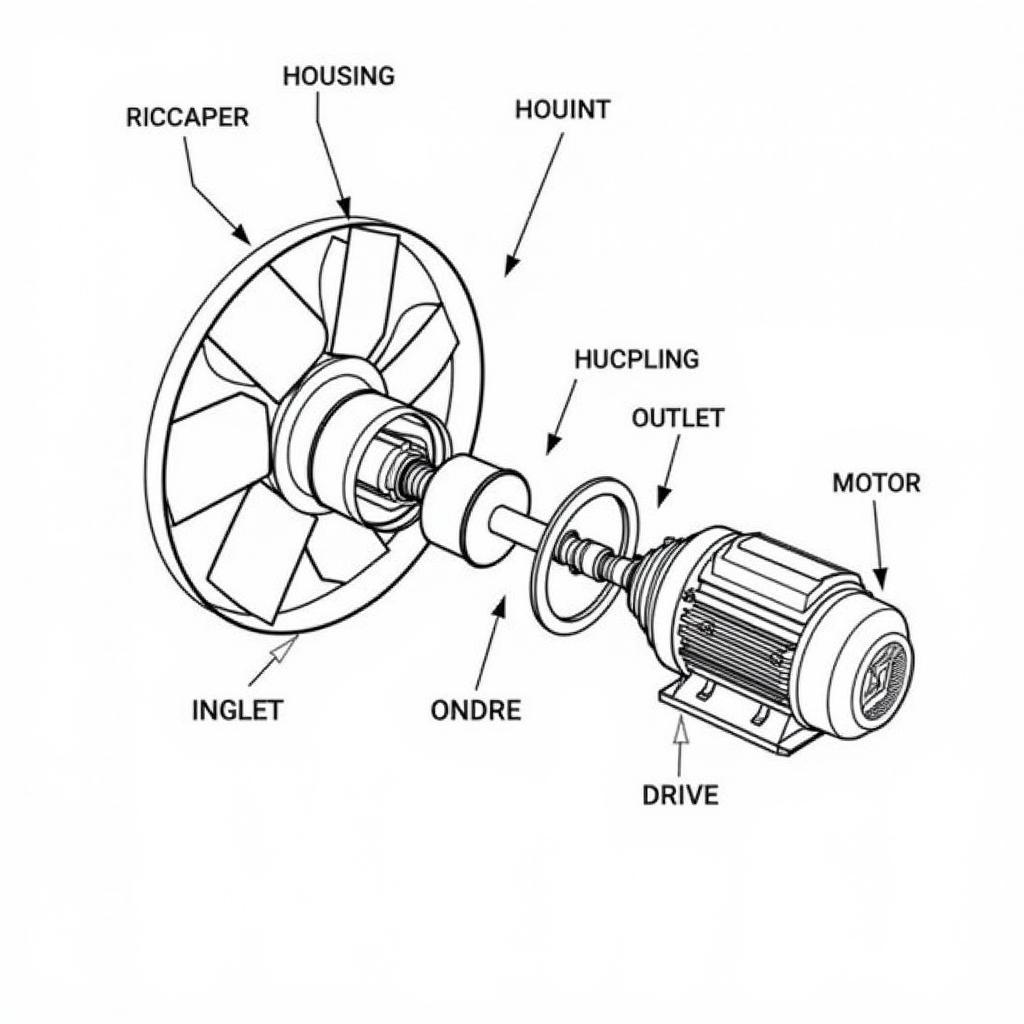Choosing the right industrial centrifugal fan blower is crucial for optimizing your operations. Whether you’re dealing with ventilation, material handling, or combustion processes, selecting the right fan blower can significantly impact energy efficiency, system performance, and overall costs. This comprehensive guide will equip you with the knowledge to make an informed decision.
Understanding Your Needs: The Foundation of Selection
Before diving into the technical aspects, it’s essential to clearly define your specific requirements.
- Application: What is the primary purpose of the fan blower? (e.g., ventilation, material handling, combustion)
- Air Volume: What volume of air needs to be moved per unit of time? (typically measured in cubic feet per minute (CFM) or cubic meters per hour (m³/h))
- Static Pressure: What resistance does the fan need to overcome to move the air? (measured in inches of water gauge (in. wg) or Pascals (Pa))
- Operating Environment: What are the temperature, humidity, and dust/particle levels in the environment where the fan will operate?
- Efficiency Requirements: What are your target energy consumption goals?
- Noise Constraints: Are there specific noise level limitations in your operational area?
 Industrial Fan Applications
Industrial Fan Applications
Key Factors to Consider When Choosing an Industrial Centrifugal Fan Blower
Once you have a clear understanding of your needs, you can start evaluating different industrial centrifugal fan blowers based on the following key factors:
1. Fan Type and Design
- Radial Blade Fans: Ideal for high-pressure applications with relatively low air volume requirements.
- Forward Curved Blade Fans: Suitable for low to medium pressure applications with higher air volume needs.
- Backward Inclined Blade Fans: Offer high efficiency and operate quietly, making them suitable for a wide range of applications.
- Airfoil Blade Fans: Provide the highest efficiency and operate at lower noise levels, making them ideal for demanding applications.
2. Impeller Size and Speed
The impeller is the rotating component of the fan that creates airflow.
- Larger impellers generally move more air at lower speeds, resulting in quieter operation.
- Smaller impellers running at higher speeds provide higher pressure capabilities.
3. Motor and Drive System
- Motor Horsepower: Determined by the fan’s airflow and pressure requirements.
- Drive Types: Direct drive, belt drive, and variable frequency drive (VFD) are common options, each with its advantages and disadvantages in terms of efficiency, controllability, and maintenance.
4. Material Construction
The fan’s construction material should be compatible with the operating environment. Common materials include:
- Steel: Offers durability and affordability.
- Stainless Steel: Provides excellent corrosion resistance for harsh environments.
- Aluminum: Lightweight and suitable for corrosive environments.
5. Noise and Vibration Control
Consider features like silencers, vibration isolators, and aerodynamically designed housings to minimize noise and vibration levels, especially in noise-sensitive environments.
 Centrifugal Fan Components
Centrifugal Fan Components
Optimizing Efficiency and Performance
- Proper Sizing: Selecting a fan that is either too large or too small for your application will lead to inefficiencies and performance issues.
- System Resistance: Minimize system resistance by ensuring ductwork is properly sized, free of obstructions, and has smooth bends.
- Regular Maintenance: Implement a preventative maintenance schedule that includes cleaning, lubrication, and component inspection to ensure optimal performance and longevity.
Expert Insights:
“When selecting a fan, it’s not just about moving air; it’s about moving air effectively and efficiently,” says John Miller, a senior engineer specializing in industrial ventilation systems. “Understanding your specific needs, considering all the relevant factors, and investing in quality equipment are crucial steps in achieving optimal system performance and minimizing operating costs.”
Conclusion
Selecting the right industrial centrifugal fan blower requires a thorough understanding of your application requirements and a careful evaluation of various technical factors. By following the guidelines outlined in this guide, you can make an informed decision that ensures optimal system performance, energy efficiency, and long-term reliability. Remember to consult with experienced professionals for personalized guidance and support throughout the selection process.
FAQs
1. What is the difference between a fan and a blower?
While often used interchangeably, “blowers” generally refer to devices that generate higher pressure, typically above 1 pound per square inch gauge (psig), while “fans” operate at lower pressures.
2. How do I determine the correct fan size for my application?
Determining the correct fan size requires calculating the required airflow (CFM or m³/h) and static pressure (in. wg or Pa) based on your specific application needs.
3. What is a variable frequency drive (VFD), and why is it beneficial?
A VFD allows you to adjust the fan motor speed, providing greater control over airflow and static pressure. This results in significant energy savings, especially in applications with fluctuating demand.
Need Assistance?
For expert advice on selecting the perfect industrial centrifugal fan blower for your unique needs, contact us at 0903426737, email us at fansbongda@gmail.com, or visit us at Tổ 9, Khu 6, Phường Giếng Đáy, Thành Phố Hạ Long, Giếng Đáy, Hạ Long, Quảng Ninh, Việt Nam. Our dedicated team is available 24/7 to provide you with tailored solutions and exceptional customer service.


